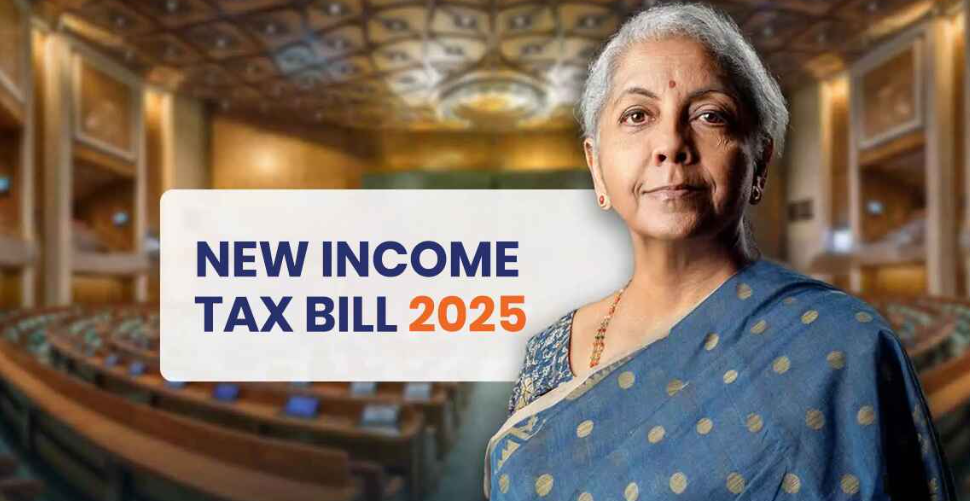Explaining The New Tax Rules 2025
The income tax landscape in India just underwent a massive change! Millions of taxpayers are finding out right now that they will have much more money in their wallets from April 1, 2025 and onward. Whether employed on salary, as a business owner or retiree, these are changes that touch you personally. Here is what you need to know about the new income tax rules and how they affect you.
The Big Picture: What Changed in 2025 And Beyond?
The Union Budget 2025 announced many radical changes for easier and rewarding tax filing for the common man. The modifications will be applicable from April 1, 2025 and beyond i.e. from FY 2025-26 onwards. The government’s main goal? So that middle-class Indians save more and have greater spending power.
And these are not minor adjustments — it is transformational which could potentially save you thousands of rupees a year. From new tax slabs to higher deduction limits, it’s all about making taxes fairer and more transparent under the new rules.
Tax Slabs Which Make Sense
The New Tax Regime Is Even Better
With this the base exemption rate has gone up to Rs 4 lakh giving relief to taxpayers right away. But that’s just the beginning. And here’s how the new tax slabs for FY 2025-26 look:
| Income Range | Tax Rate |
|---|---|
| Up to Rs 4 Lakh | No tax |
| Rs 4 lakh – Rs 8 lakh | 5% |
| Rs 8 lakh – Rs 12 lakh | 10% |
| Rs 12 lakh – Rs 20 lakh | 15% |
| Rs 20 lakh – Rs 24 lakh | 25% |
| Above Rs 24 lakh | 30% |
What’s the game-changer? That is the new 25% tax slab rate for taxable income between Rs 20 lakh and Rs 24 lakh. This is an important departure from the earlier tax structure where income above Rs 15 lakh attracted a flat rate of 30%.
For detailed information on tax compliance and legal services, visit Zista Legalis.
What, You May Wonder, About the Old Tax Regime?
Not to worry — the old tax regime is still there! They didn’t eliminate the government program; they just made the new regime the default. The old system persists in its familiar slabs:
- Up to Rs 2.5 lakh: No tax
- Rs 2.5 lakh – Rs 5 lakh: 5%
- Rs 5 lakh – Rs 10 lakh: 20%
- Above Rs 10 lakh: 30%
Important Note: Senior citizens between 60-80 years receive a basic exemption of Rs 3 lakh, and super senior citizens over 80 years get an exemption of Rs 5 lakh under the old regime.
Zero Tax Up to Rs 12.75 Lakh: How is it even possible?
This is arguably the most exciting announcement in Budget 2025. The rebate under Section 87A has been hiked to Rs 60,000 for taxable incomes of up to Rs 12 lakh. So, a person having an income of up to Rs 12 lakh would effectively become liable for zero tax!
Salaried workers even have it better. With a Standard Deduction of Rs 75,000, salaried individuals will not pay income tax for income up to Rs 12.75 lakh.
Let’s Do the Math
Pretend you’re a salaried earner making Rs 12 lakh every year:
- Gross Income: Rs 12,00,000
- Less: Standard Deduction: Rs 75,000
- Taxable Income: Rs 11,25,000
Tax Calculation:
- Rs 0-4 lakh = Nil
- Rs 4-8 lakh = Rs 20,000 (5%)
- Rs 8-11.25 lakh = Rs 32,500 (10%)
- Total Tax before Rebate: Rs 52,500
- Less: Rebate u/s 87A: Rs 52,500
- Final Tax: Rs 0
One of the major proposals has been to increase the limit for TDS on interest income, earned by senior citizens, from Rs 50,000 to Rs 1,00,000. This is good news indeed for pensioners who rely on interest payouts from fixed deposits.
Tax Smart Planning Under New Rules
Should You Go New or Old Regime?
This is the million-dollar question! Here is one easy way to decide:
Choose New Regime If:
- You don’t have big tax-saving investments
- Your deductions are under Rs 3 lakhs
- You prefer simplicity over paperwork
- You are making anywhere between Rs 8 to 20 lakh per annum
Stick with Old Regime If:
- You have large amounts to be allocated in PPF, ELSS, life insurance
- Interest on your home loan is greater than Rs 2 lakh
- You receive HRA, LTA or any other allowance
- Your cumulative deduction is in excess of Rs 3.5 lakh
Save Tax Even Under New Regime With These Available Options
Do not assume the new regime means zero deductions! Here’s what you can still deduct:
- Standard Deduction: Salaried individuals will get a standard deduction of Rs 75,000
- NPS Employer Contribution: 14% of basic salary as per CCD(2)
- Agniveer Corpus Fund: Deduction for contributions
- Other Allowances: Transport allowance, conveyance allowance are exempt
For more insights on taxation and financial planning, check out the Income Tax Department’s official portal.
What Happens on TCS on Foreign Remittance?
Great news for the travelers and students overseas! The TCS limit for overseas money transfers has been hiked which means now you’ll only be subject to TCS deduction if your total remittance crosses Rs 10 lakh in a financial year instead of the earlier Rs 7 lakh.
This means:
- Educational expenses abroad: Higher threshold
- Foreign travel: Less TCS burden
- Medical treatment overseas: More flexibility
- Gift remittances: Better limits

Filing Returns: Revised Schedule and Grace Period
Here’s something that usually doesn’t get mentioned but is very crucial. There is no change in tax return filing deadlines but taxpayers will have four years, not two, to remedy errors and omissions.
This longer window for filing updated returns provides you with:
- Extra time to track down overlooked deductions
- Flexibility to correct genuine mistakes
- Reduced penalties for honest errors
- Better compliance without pressure
Special Provisions You Should Know
For Start-ups
Start-ups which are incorporated between 1st April, 2023 and 31st March, 2025 have an option to exercise one time tax exemption of 100% of income for any three consecutive assessment years out of ten years at their discretion. This encourages entrepreneurship and makes India more startup-friendly.
For Property Owners
Now you can show up to two self-occupied houses as having a value of nil for income tax purposes. Earlier, this privilege was available with only one property.
For ULIP Investors
ULIPs with annual premium of more than Rs 2.5 lakh to be treated as capital gains on maturity. This puts ULIP taxation at par with mutual fund investments, and creates a level playing field.
The New Income Tax Act 2025
And there’s even more exciting news to come! The draft Income Tax Bill was placed in the Lok Sabha by the Government of India on 13th February, 2025. The bill proposes to replace the 63-year-old Income Tax Act (1961).
What Makes It Different?
Even though the current Income Tax Act is spread across 52 chapters and runs up to 823 pages, the new bill compresses it into 23 chapters and details it in 16 schedules totaling around 622 pages.
The bill focuses on:
- Plainer language for regular people
- Removing outdated and conflicting provisions
- Less litigation between taxpayers and the department
- Digital-first approach to tax compliance
India aims to roll out the new tax law from April 1, 2026, and it will replace the Income Tax Act of 1961.
Real-World Impact: What Will You Save?
Let’s take some real life examples and see the actual savings.
Example 1: Middle Class (Rs 10 lakh annual income)
Under Old Regime:
- Tax: Rs 1,12,500
- Less: Rebate (if available): Rs 12,500
- Final Tax: Rs 1,00,000
Under New Regime (2025):
- Gross Income: Rs 10,00,000
- Less: Standard Deduction: Rs 75,000
- Taxable Income: Rs 9,25,000
- Tax Calculated: Rs 32,500
- Less: Rebate u/s 87A: Rs 32,500
- Final Tax: Rs 0
Savings: Rs 1,00,000 per year!
Example 2: Better Off Person (Income Rs 20 lakh annually)
Previous Tax (FY 2024-25):
- Tax: Rs 3,12,500
New Tax (FY 2025-26):
- Tax calculated: Rs 2,77,500
Savings: Rs 35,000 per year
Common Mistakes to Avoid
- Failure to Opt for the Appropriate Regime: Compute tax under both regimes and then decide which is better.
- Not applying for the standard deduction: This is done by default, but see if it has been applied in Form 16.
- Lost TDS Certificates: Gather all Form 16A certificates relating to TDS deductions.
- Ignoring Updated Return Option: You have 4 years to correct mistakes.
- Lack of Investment Planning: You can claim NPS employer contribution deduction under New regime also.
How This Affects Different Groups
Salaried Employees
Winners: Maximum benefit from new slabs and increased standard deduction for those earning Rs 8-15 lakh.
Senior Citizens
TDS threshold for interest income of senior citizens is raised from Rs 50,000 to Rs 1,00,000. This means less headache when it comes to TDS refunds.
Freelancers and Consultants
Higher TDS limits in the case of Section 194J (professional fees) would mean fewer advance tax concerns and better cash flow.
Small Business Owners
Government has proposed to raise the threshold limits of various TDS sections applicable on individuals as well as businesses. This reduces compliance burden significantly.
Looking Ahead: What’s Next?
It’s only the beginning of 2025 tax reforms. With the new Income Tax Bill in 2026, India is following the path of:
- Simple Tax Code: Can be read and understood by the average person
- Online Integration: Easy e-filing and automatic processing
- Less litigation: Reducing discretion and arbitrariness
- Transparency: Clearer tax calculations
The government vision is plain: make tax compliance so simple that people will want to participate, instead of hunting for loopholes.
Key Takeaways
✓ No tax up to Rs 12.75 lakh for salaried employees under new regime
✓ Standard deduction raised to Rs 75,000 per annum for all salaried persons
✓ New slab of 25% on income between Rs 20 lakh to Rs 24 lakh
✓ Higher TDS limits reducing compliance burden
✓ 4-year window to file updated returns for corrections
✓ Section 87A rebate limit hiked to Rs 60,000 for Rs 12 lakh income or below
-
🧾 Looking for legal ways to save on taxes? Start here: Can You Legally Avoid Paying Too Much Tax? Here’s How
Making the Switch: What To Do Now
Here’s your action plan:
- Compare Tax Regimes: Use online calculators to compare old and new regime slabs.
- Review Your Investments: Check if your existing tax-saving investments still stand valid.
- Update Form 12BB: Make sure your employer has accurate details for TDS.
- Plan for Next Year: Begin tax planning early for more benefits.
- Stay Alert: Tax laws change; be prepared to make sure you know all that you can!
For comprehensive legal and tax advisory services, visit Zista Legalis.

Frequently Asked Questions (FAQs)
Q1. Will the new tax system be mandatory from April 2025?
No, the new tax system is optional. The old tax regime is still available and taxpayers can choose it every year. Salaried taxpayers that don’t earn business income can opt in and out of regimes every year.
Q2. Can I claim HRA under the new tax regime?
No, there is no HRA under the new tax regime. But if you choose the old tax regime, you can claim HRA. This is one of the larger deductions you lose when you opt for the new regime.
Q3. How would the increased Section 87A rebate help?
Section 87A rebate has been hiked from the existing Rs 25,000 to Rs 60,000 in the new tax regime. This effectively implies that if your gross taxable income is Rs 12 lakh or lower then you can claim a rebate of up to Rs 60,000 which might reduce your tax liability to nil. This rebate is only available for resident individuals.
Q4. Are senior citizens entitled for the benefits under new tax regime?
Yes, senior citizens can choose the new tax regime and enjoy the revised slabs & standard deduction of Rs 75,000. However, the new regime doesn’t provide those higher basic exemption limits (Rs 3 lakh for senior citizens and Rs 5 lakh for super senior citizens) that are offered by the old regime.
Q5. What is the raised TDS limit on rent, and how does it benefit me?
The TDS limit on rent has been hiked to Rs 6 lakh per annum from Rs 2.4 lakh. This means in case your annual rent is below Rs 6 lakh, no TDS will be deducted. It reduces paperwork for landlords and tenants, and accelerates the flow of funds to property owners.
Q6. Can I continue to invest in PPF and take deductions under the new regime as well?
You can invest in PPF but cannot take deduction under Section 80C in the new regime. PPF investments will continue to earn tax-free returns, but the initial investment won’t help lower your taxable income if you opt for the new regime.
Q7. What if I start a new job during the year?
Even if you have changed a job during the year, you can still avail full standard deduction of Rs 75,000. The amount of the standard deduction does not have to be reduced for the months you work. But make sure both employers have your Form 12BB, to avoid getting too much TDS cut.
Q8. How do I file an updated return now that the time limit is 4 years?
You may file an updated return within four years from the end of the relevant assessment year by logging in at the income tax e-filing portal and selecting “Updated Return” under “E-File” and then choose the assessment year for which you want to file. But you will owe additional tax with interest if any portion was underreported in your original return.
Q9. Do I automatically get standard deduction or do I have to apply for it?
You can claim the standard deduction when filing your income return. Your employer also takes it into account when computing TDS on your salary. You don’t have to produce any document or proof to claim it — it’s a straightforward deduction applicable to all salaried individuals.
Q10. Which regime is best for someone with a home loan?
If you have a home loan, generally the old tax regime is better since you can claim deduction on principal (up to Rs 1.5 lakh under Section 80C) and interest (up to Rs 2 lakh under Section 24b). You can’t have these deductions in the new regime. Calculate your tax under both and then make the decision.
Final Thoughts
The new income tax regime for 2025 indicates India’s intention towards providing a taxpayer-friendly atmosphere. Simplified slabs, raised exemption limits, reduced compliance: the philosophy behind the new personal income tax regime is to bring substantial reduction in tax paid by individuals so that they have more money in their hands.
Whether you’re new on the job or closing in on retirement, these changes provide tangible benefits. This all depends on your personal situation and you will need to do some math to arrive at an educated decision. Remember, the objective is not just to avoid tax—it’s to organize your finances in a manner that best achieves your longer-term goals and remains legal.
With the new Income Tax Bill from 2026, we are gradually making Indian taxation simple, clearer and more equitable. Keep reading, plan accordingly — and leverage these new rules to create a more secure financial future.
DISCLAIMER: This article is based on general income tax provisions from April 1, 2025. Tax laws change and personal situations differ. Be sure to get guidance as it applies to your circumstances from a licensed tax advisor.





